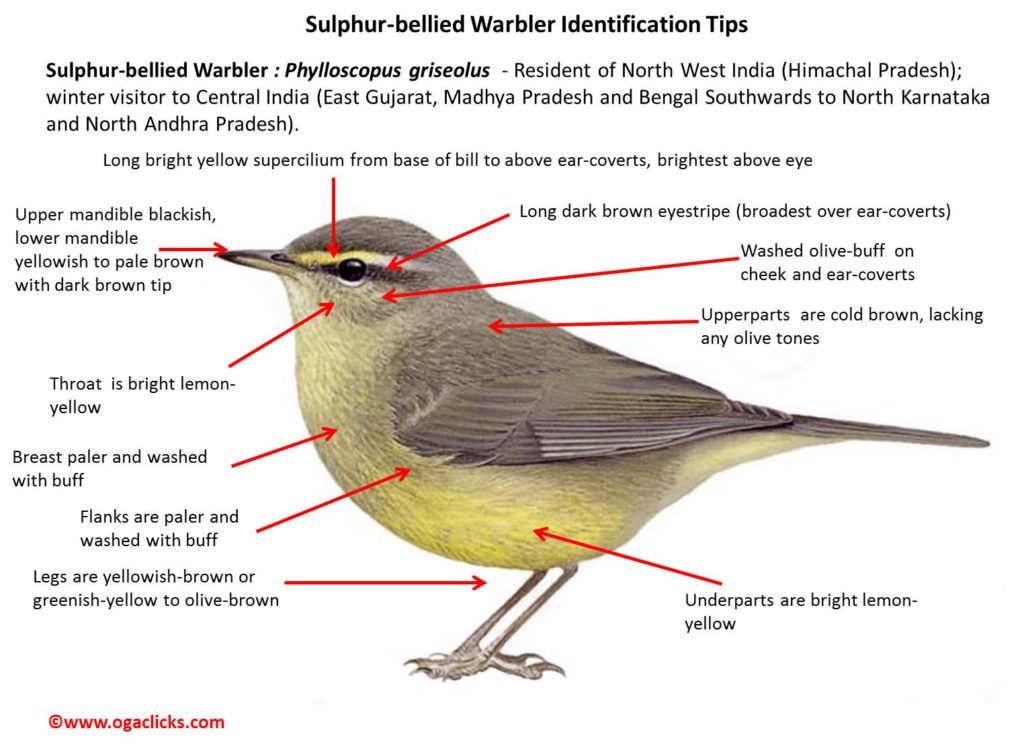Sulphur-bellied Warbler

Sulphur-bellied Warbler Phylloscopus griseolus
Etymology :
- Phylloscopus : Greek word phullon – leaf; skopos – seeker
- Griseolus: Latin word for “gery” derived from griseus- grey
Vernacular Names : Guj: Sado kitkit, Ladakhi futki, Mar: Pivlya Potacha Vatvatya
Distribution in India: Breeds in Western Himalayas, winter visitor in Central and North India.
Description: Size of 11-12 cm.It is a small to medium-sized leaf-warbler. It has a long bright yellow supercilium from base of bill to above ear-coverts, brightest above eye, long dark brown eyestripe ,broadest over ear-coverts; cheek and ear-coverts washed olive-buff; crown and upperparts generally cold brown, lacking any olive tones; wing and tail duller brown, narrow greyish-white outer edges of flight-feathers; throat and underparts bright lemon-yellow, paler and washed with buff on breast side and heavily on flanks; undertail-coverts yellowish-white; underwing-coverts yellowish-buff; iris dark brown; upper mandible blackish, lower mandible yellowish to pale brown with dark brown tip; legs variable, yellowish-brown or greenish-yellow to olive-brown. Both the sexes look similar.
Habitat : It is found duringbreeding season in dry stony mountain slopes, rocky screes and boulder-strewn hillsides with low vegetation, scattered juniper and stunted blue pines, and other shrubs, from 2590–4575 m. In non-breeding range, found at lower levels below 1500 m in thick undergrowth in deciduous woodland, also rocky areas, steep-sided ravines, and around old walls or buildings; on passage in forest, wooded valleys and patches of thorn-scrub and bushes along streams and rivers.
Food Habits: It eats small insects, especially small beetles, including weevils, larvae and molluscs. It usually forages alone or in pairs; in non-breeding season may occur in mixed-species flocks. It forages mostly on the ground, where its actions among and over moss-covered boulders nervously flicks wings from time to time, also creeps sideways on tree trunks, and shuffles along branches. It examines undergrowth and scrub thoroughly in search of prey.
Breeding Habits: They breeds in April-Aug in India.The nest is built entirely by female over 4–10 days. The nest is a ball of dry grasses, plant fibers and feathers, placed up from ground in dense low bush, nettle bed, dwarf willow or juniper thicket. They lay a clutch of 4-5eggs. The incubation is done by female for a period of14-17 days. The fledging period is 14-15 days. The young fed by parents for further 15 days.